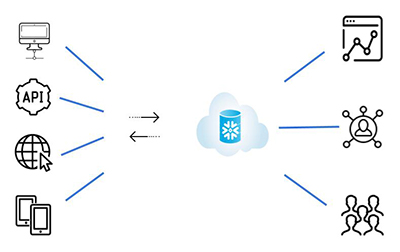
Cloud Data System Increases Performance for a Fortune 500 Company

THE BRIEF
An American Fortune 500 integrated communications company that provides marketing and business communications, commercial printing, and related services, helps to optimize their clients engagements with their customers by storing and managing their data. Historically, this data was stored on traditional systems that were inaccessible to their clients. The company wanted a packaged solution and began considering different cloud data warehouses; such as AWS, Azure, Cloudera, and more. Apexon was approached to head this implementation.
THE CHALLENGE
The client’s customers’ data was stored on an internal system, requiring customers to reach out to the client whenever there was a need to access it. The Senior V.P. of IT wanted to find a way to centralize and improve this process, as well as give their clients access to the data managed by the company. The issue was that they did not want to be locked into a single provider, and were looking for a more flexible and pliable solution. After considering multiple providers, the company made the decision to go with Snowflake; a highly anticipated and talked about cloud data warehouse that does not charge licensing fees, like its competitors, but charges by usage.
THE SOLUTION
Apexon was chosen to be the implementation partner, as Snowflake and Apexon had recently entered a new alliance partnership agreement. As a result, Apexon already had in place a team of Snowflake experts that would be able to easily streamline this process for the client.
The first step was to access the client’s data, cleanse and prepare it for integration. Snowflake allows the client’s structured and semi-structured data to be easily moved into a centralized system, which is accessible to any user on any application. The integration ensured that there was no limit on the amount of users and no maximum capacity for simultaneous users; also ensuring that there would be no performance degradation in either of these scenarios. Afterwards, the data can be used for forecasting, analytics, and provide business insight.

Different data is converted into a single format and transferred into a multi-cluster database. The data can be pushed to consumers and data analytics, or used for predicting trends and gaining customer insights.
THE RESULTS
System speed operated 200x faster
Once the integration was completed, the client saw a significant increase in performance.
Users paying a tenth of competitor’s cost
Compared to other cloud warehouse databases that charge flat licensing fees, users only pay for what they use with Snowflake.
PARTNERSHIP PLATFORMS/SOFTWARE





